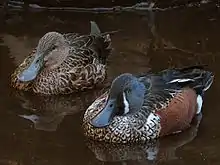Lake Bathurst (New South Wales)
Lake Bathurst (Aboriginal: Bundong) is a shallow lake located 27 kilometres (17 mi) south-east of Goulburn, New South Wales in Australia. It is also the name of a nearby locality in the Goulburn Mulwaree Council.
| Lake Bathurst | |
|---|---|
 Lake Bathurst at the top of the image, pictured in 1985, viewed from a Space Shuttle. The larger lake is Lake George. | |
 Lake Bathurst Location in New South Wales | |
| Location | Southern Tablelands, New South Wales |
| Coordinates | 35°03′S 149°44′E |
| Native name | Bundong |
| Etymology | Earl Bathurst |
| Basin countries | Australia |
| Surface area | 2 to 10 km2 (0.77 to 3.86 sq mi) |
Features and location
The surface area of the lake can vary from 2 square kilometres (0.77 sq mi) up to 10 square kilometres (3.9 sq mi), depending on the inflow and evaporation rates.
The lake was named by surveyor James Meehan in honour of Earl Bathurst, Secretary of State for the Colonies,[1] and the nearby village was named after the lake.
Birds

The lake is an important site for Australasian shovellers. A 19 square kilometres (7.3 sq mi) area of the lake and its immediate surrounds has been identified by BirdLife International as an Important Bird Area (IBA) because it regularly supports significant numbers of near threatened blue-billed ducks and over 1% of the world population of Australasian shovellers. It is an important drought refuge, sometimes supporting over 1% of the world populations of freckled ducks, black swans, chestnut teals and sharp-tailed sandpipers.[2][3]
Locality
| Lake Bathurst New South Wales | |||||||||||||||
|---|---|---|---|---|---|---|---|---|---|---|---|---|---|---|---|
 | |||||||||||||||
 Lake Bathurst | |||||||||||||||
| Coordinates | 35°00′57″S 149°39′02″E | ||||||||||||||
| Population | 228 (2016 census)[4] | ||||||||||||||
| Postcode(s) | 2580 | ||||||||||||||
| Location | |||||||||||||||
| LGA(s) | Goulburn Mulwaree Council | ||||||||||||||
| Region | Southern Tablelands | ||||||||||||||
| County | Argyle | ||||||||||||||
| Parish | Covan | ||||||||||||||
| State electorate(s) | Goulburn | ||||||||||||||
| Federal division(s) | Hume | ||||||||||||||
| |||||||||||||||
Lake Bathurst is also the name of a very small village, located on the Goulburn-Braidwood Road, 3 kilometres (1.9 mi) west of the lake.[5] At the 2016 census, the Lake Bathurst area had a population of 228.[4]
Lake Bathurst station


Lake Bathurst had a railway station (35°00′54″S 149°38′53″E) on the Bombala railway line from 1884 to 1975.[6][7]
Inveralochy station
Another station (34°57′56″S 149°38′51″E) was established under the name of Inveralochy in the northern part of the locality in 1890 and was closed in 1974.[8][9]
Military history
During World War II, Lake Bathurst was the location of RAAF No.16 Inland Aircraft Fuel Depot (IAFD), completed in 1942 and closed on 29 August 1944. Usually consisting of 4 tanks, 31 fuel depots were built across Australia for the storage and supply of aircraft fuel for the RAAF and the US Army Air Forces at a total cost of £900,000 ($1,800,000).[10]
References
- "Lake Bathurst". www.argylecounty.com.au. Archived from the original on 14 February 2017. Retrieved 21 July 2017.
- "IBA: Lake Bathurst". Birdata. Birds Australia. Archived from the original on 6 July 2011. Retrieved 19 July 2011.
- "Lake Bathurst". BirdLife International. Archived from the original on 3 August 2017. Retrieved 3 August 2017.
- Australian Bureau of Statistics (27 June 2017). "Lake Bathurst". 2016 Census QuickStats. Retrieved 3 August 2017.
- "Lake Bathurst". Geographical Names Register (GNR) of NSW. Geographical Names Board of New South Wales. Retrieved 3 August 2017.
- "Lake Bathurst Station". NSWrail.net. Retrieved 21 July 2017.
- "Lake Bathurst Railway Station". Geographical Names Register (GNR) of NSW. Geographical Names Board of New South Wales. Retrieved 3 August 2017.
- "Inveralochy". NSWRail.net. Retrieved 3 August 2017.
- "Inveralochy Railway Station". Geographical Names Register (GNR) of NSW. Geographical Names Board of New South Wales. Retrieved 3 August 2017.
- Australia. Royal Australian Air Force. Historical Section (1995), Logistics units, AGPS Press, ISBN 978-0-644-42798-2
Further reading
- McDonald, J. Kay. (1985). Exploring the ACT and Southeast New South Wales. Kangaroo Press: Sydney. ISBN 0-86417-049-1